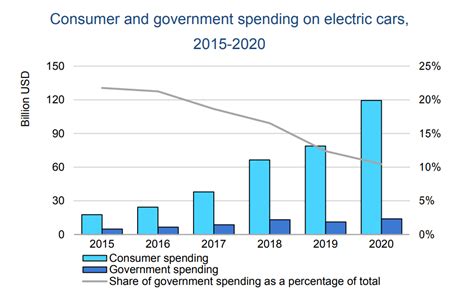Driving Change: How Government Electric Car Rebates are Accelerating EV Adoption
The automotive industry is undergoing a profound transformation as electric vehicles (EVs) are becoming an increasingly viable alternative to traditional gasoline-powered cars. This shift is driven significantly by government incentives designed to accelerate EV adoption, particularly through rebates and subsidies. In this article, we will explore how these rebates are influencing consumer behavior, contributing to a greener future, and what they mean for the overall automotive landscape.
The Rise of Electric Vehicles
Electric vehicles have evolved from niche products to mainstream choices for many consumers. According to recent reports, global sales of electric cars have surged, with a 43% increase in 2020 alone. Various factors contribute to this growth, including advancements in battery technology, increased charging infrastructure, and rising environmental awareness. However, one of the most significant catalysts has been government intervention in the form of financial incentives.
Understanding Government Electric Car Rebates
Governments at various levels have recognized the importance of transitioning to electric vehicles to reduce carbon emissions and combat climate change. To encourage consumers to make the shift, they offer electric car rebates that can significantly lower the upfront costs associated with purchasing an EV. These rebates can come in different forms, such as:
- Tax Credits: Many countries provide tax credits that reduce the taxable income of EV purchasers, thus lowering the overall cost of the vehicle.
- Direct Rebates: Some governments offer direct financial incentives that can be applied at the time of purchase, effectively lowering the sale price of an electric vehicle.
- Grants and Loans: Additional funding options may be available to help consumers finance the purchase of electric vehicles or install home charging stations.
The Impact of Rebates on Consumer Behavior
One of the major barriers to EV adoption has been the higher initial cost compared to traditional vehicles. Government rebates help to bridge this cost gap, making electric cars more accessible to a wider range of consumers. Research shows that financial incentives directly influence the likelihood of a consumer choosing an EV. For instance, a survey by the International Council on Clean Transportation found that nearly 60% of potential car buyers reported that rebates would play a crucial role in their decision-making process.
Moreover, with information dissemination and increased awareness about EV benefits, consumers are now more inclined to make informed choices. The perception of EVs is improving; they are viewed not just as eco-friendly alternatives but also as practical options equipped with modern technology and performance features.
Environmental Benefits of EV Adoption
The shift towards electric vehicles represents a crucial strategy in reducing greenhouse gas emissions. The transportation sector is a significant contributor to carbon emissions, and transitioning to electric cars can help mitigate this impact. Electric cars produce zero tailpipe emissions, which means they do not contribute directly to air pollution in urban environments.
Furthermore, when paired with renewable energy sources, the environmental benefits of EVs are amplified. Governments are investing in green technology to ensure that the electricity powering these vehicles comes from sustainable sources like wind and solar power. This synergy creates a more holistic approach to tackling climate change, making electric vehicles a pivotal component of a sustainable future.
Challenges and Considerations
While government rebates are a powerful tool in facilitating EV adoption, several challenges remain. For one, the rebate programs are often limited in scope or budget, which can create disparities in access for different demographic groups. Additionally, the lack of sufficient charging infrastructure in certain regions can deter potential EV buyers, even with financial incentives. Therefore, governments need to consider a multifaceted approach that addresses not only financial barriers but also infrastructural and educational aspects.
Conclusion
In conclusion, government electric car rebates are significantly accelerating the adoption of electric vehicles by making them financially accessible to a broader audience. As consumers become increasingly aware of the environmental and economic benefits of EV ownership, the role of these incentives becomes ever more critical. While challenges remain, ongoing government support and strategic initiatives to enhance charging infrastructure can pave the way for a more sustainable future.
FAQs
1. What are electric car rebates?
Electric car rebates are financial incentives provided by governments to reduce the purchase price of electric vehicles, making them more affordable for consumers.
2. How much can I save with electric car rebates?
The savings vary by location and program but can range from a few hundred to several thousand dollars, depending on the specific incentives offered in your area.
3. Are there federal tax credits available for electric vehicles?
Yes, many countries and states offer federal tax credits for electric vehicles that can significantly reduce your tax liability when purchasing an EV.
4. How do I apply for electric car rebates?
Typically, you can apply for rebates at the time of purchase through your dealership, or you may need to fill out specific forms after your EV purchase, depending on the program.
5. Will electric car rebates last forever?
Not necessarily. Many rebate programs have set budgets or expiration dates, so it’s essential to check the availability of programs in your region.
This HTML article provides a comprehensive overview of how government electric car rebates influence EV adoption, along with a conclusion and FAQs section.
Download Government Electric Car Rebate
